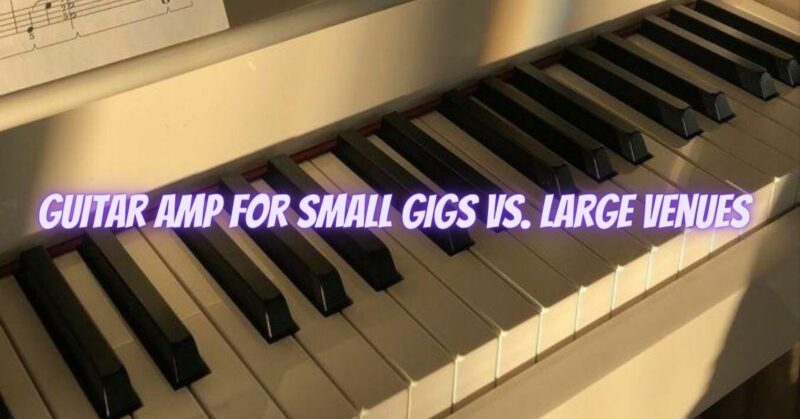As a guitarist, the right amplifier can significantly impact your performance, whether you’re playing at small gigs in intimate venues or rocking out on large stages in front of a massive audience. Each scenario presents unique challenges, and having the appropriate guitar amp can make a world of difference. In this article, we’ll explore the key factors to consider when choosing a guitar amp for small gigs and large venues.
Small Gigs:
Playing at small gigs in small venues, such as cafes, bars, or small clubs, requires an amp that strikes the right balance between portability, tone, and volume. Here are the key factors to consider for a guitar amp at small gigs:
- Portability: Opt for a compact and lightweight amp that is easy to carry and set up. You may have limited space at small venues, so a smaller amp is more convenient.
- Wattage: Lower wattage amps (around 15-30 watts) are generally sufficient for small gigs. They can deliver enough volume without overpowering the audience or causing sound-related issues in a confined space.
- Tone Control: Look for an amp with versatile tone-shaping capabilities. This allows you to adjust the EQ to suit the acoustics of different small venues.
- Built-in Effects: Consider an amp with built-in effects, such as reverb and delay, to add depth and ambiance to your sound without the need for additional pedals.
- Speaker Configuration: Smaller venues may not require large speaker cabinets. A single speaker or a small combo amp may be sufficient to cover the room adequately.
Large Venues:
When performing in larger venues, such as theaters, concert halls, or outdoor stages, your guitar amp needs to provide enough power and projection to reach the entire audience. Here are the key factors to consider for a guitar amp at large venues:
- Power Output: Higher wattage amps (above 50 watts) are better suited for large venues. They can produce the necessary volume and maintain clarity and definition even at higher levels.
- Speaker Size and Configuration: Consider an amp with larger speaker cabinets or multiple speakers to disperse the sound across the stage and venue effectively.
- Feedback Resistance: In larger venues with higher volume levels, feedback can be an issue. Look for an amp that is designed to minimize feedback and maintain stability at high volumes.
- Durability: Amps used in larger venues are subject to more wear and tear. Choose a robust and reliable amp that can handle the demands of frequent live performances.
- Compatibility with Pedals: If you use a pedalboard for additional effects, ensure that the amp can accommodate and enhance the sound of your pedal setup.
Versatility for Both Situations:
If you play in a variety of venues, you may want an amp that can handle both small gigs and large venues. Some amplifiers offer power scaling or attenuator features, allowing you to adjust the wattage and volume output to suit different performance environments. These versatile amps can be a great investment for gigging musicians.
Ultimately, the best guitar amp for small gigs vs. large venues depends on your specific needs, musical style, and the type of venues you frequently perform in. Take the time to try out different amps, consider your budget, and choose an amp that aligns with your musical goals and requirements. The right amp will enhance your guitar playing experience, elevate your performance, and leave a lasting impression on your audience, no matter the size of the venue.


